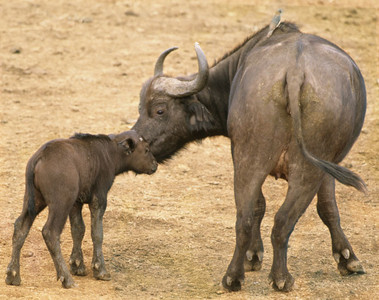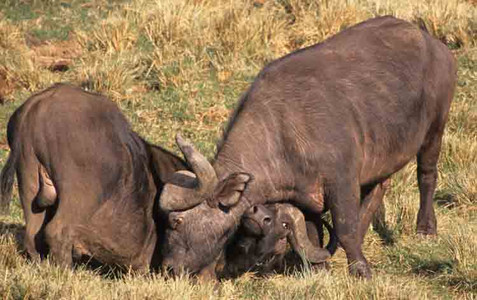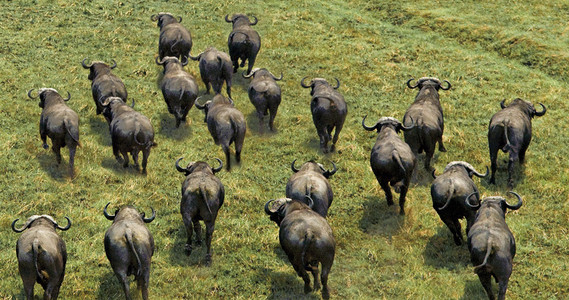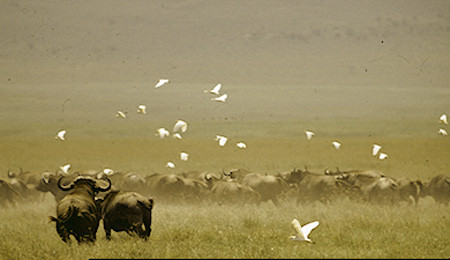
Cape Buffalo
At certain times, many small Cape Buffalo herds coalesce at a major watering site, creating a huge herd of perhaps a thousand individuals. This is what has occurred here.(Eventually, they will probably split up and reform into their former smaller groups). Obviously, the site is chosen because it has abundant water and grass. Many calves will be born. The large aggregation of protective bulls will afford some protection from lions & leopards.The above event shows the buffalo, at sunset--young & old--going to the water for a drink. [Chobe NP, Botswana] (To make this scene appear the way I saw it, I 'stitched' several images together. To have used a wide-angle lens would have diminutized the animals & have made a poor representation of what I actually saw). [Chobe River, Chobe NP, Botswana].
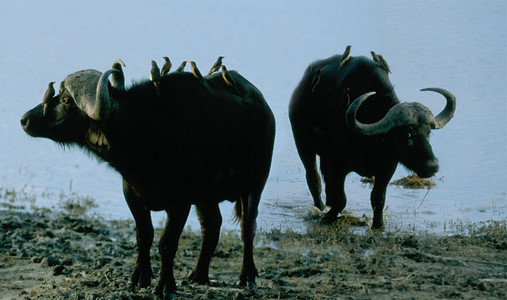
Cape Buffalo with Oxpeckers
Two bulls of the Cape Buffalo herd (previous image) emerging from a bath in the Chobe River. They are easily identified as males by the much greater breadth of the horn as it 'caps' the head. Note that they are immediately besieged by red-billed oxpeckers. [Chobe NP, Botswana]
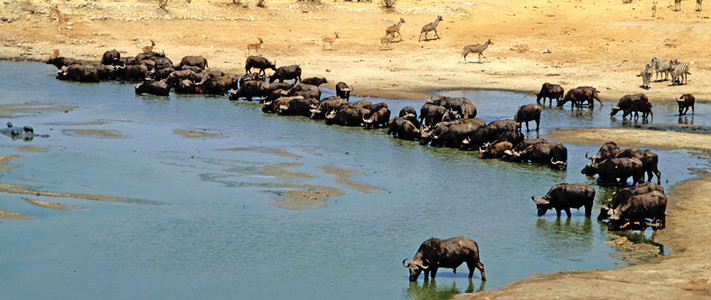
Cape Buffalo
This is a small Cape Buffalo herd having a drink and a bath. Note the hippo's head (L edge of picture, mid-area) watching the buffalo. [Masuma, Hwange NP, Zimbabwe].
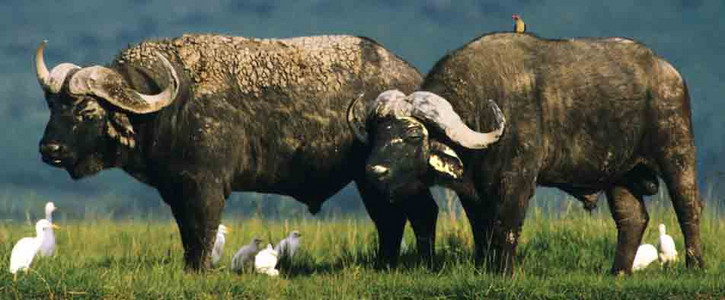
Cape Buffalo
Two old bull Cape Buffalo who have long since left the herd. It is common to see small groups of 2-8 old bulls, who live off by themselves in a symbiotic fashion, i.e., one may be nearly blind but still hears well. He is compensated by his 'friend', who is deaf, but has good vision. This arrangement works only until one dies. When the partner dies: thus the other soon dies as well. Noone knows exactly why they leave the herd. Perhaps, because of their age, they have grown tired of the long migrations to find the adequate quantities of grass and water required by a large herd, or they may have been driven out by a younger male(s). .The white birds are Cattle Egrets that follow the buffalo around to feed on the insects that are stirred up by the buffalos' feet. [Ngorogoro, Tanzania].
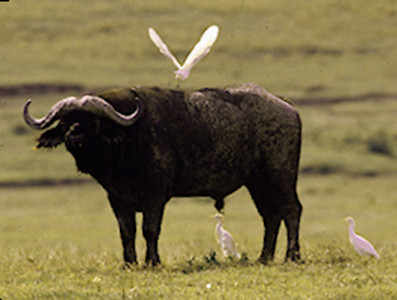
Cape Buffalo
Cattle Egret lifting off the back of a Cape Buffalo, plus 2 on the ground. They're all looking for the insects stirred up from the grass by the buffalo.[Serengeti, Tanzania].
